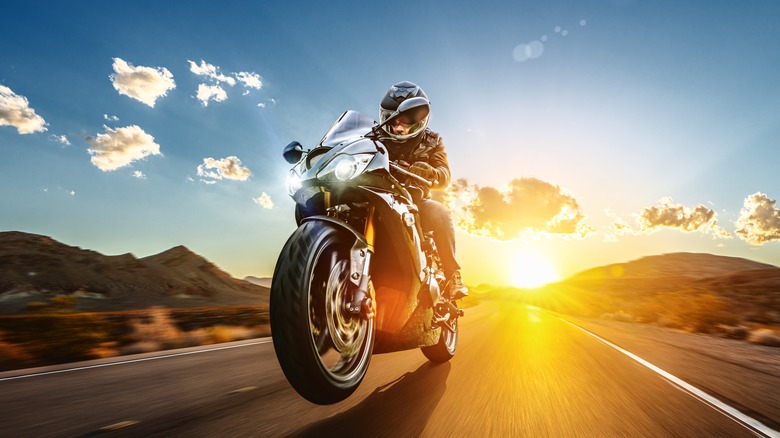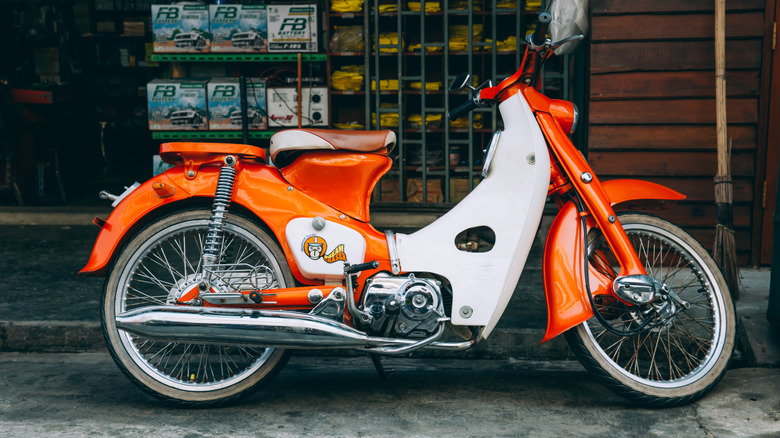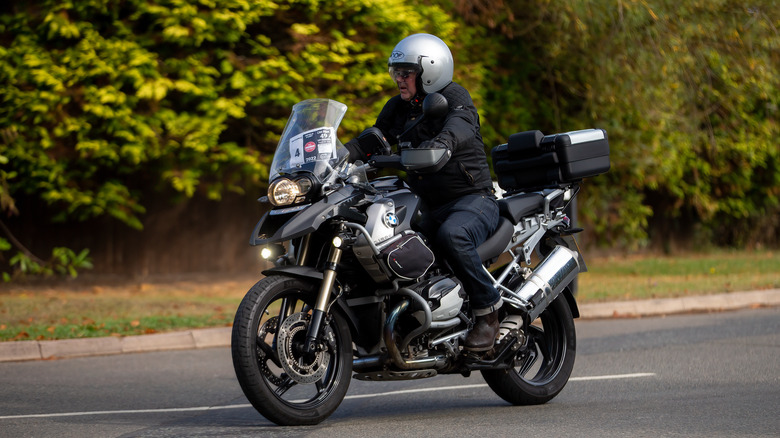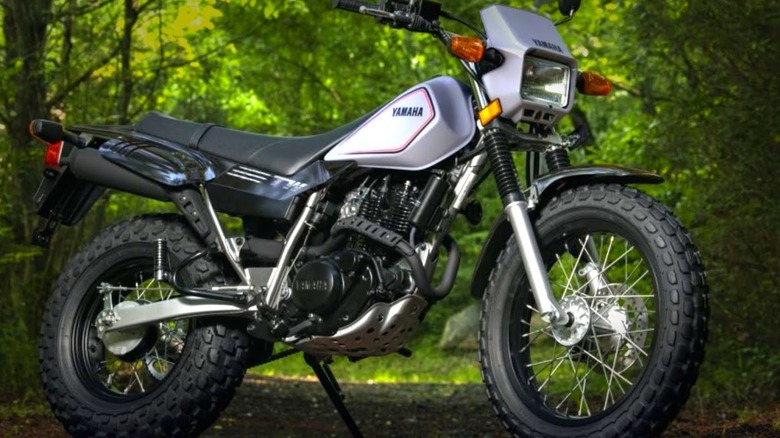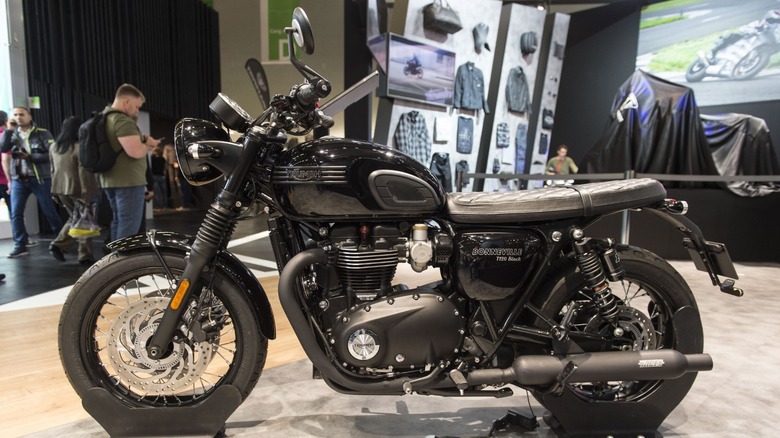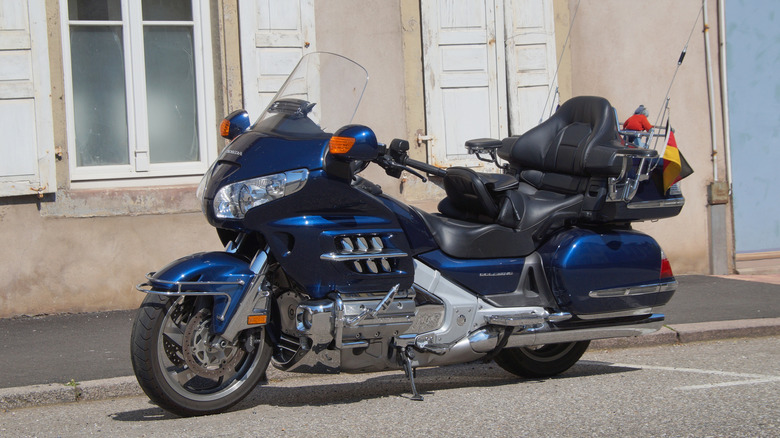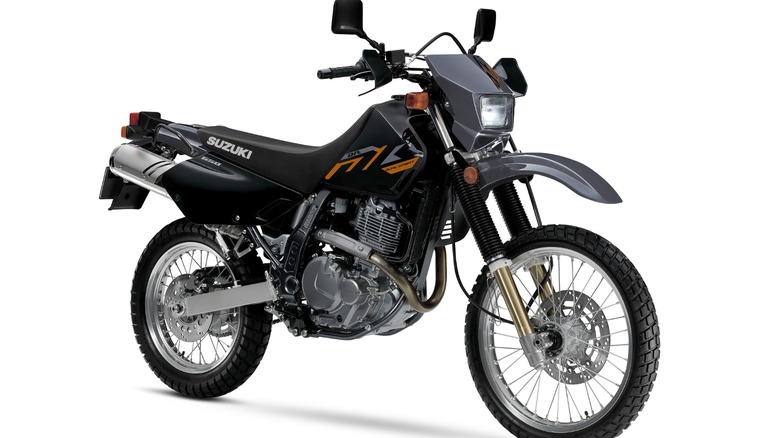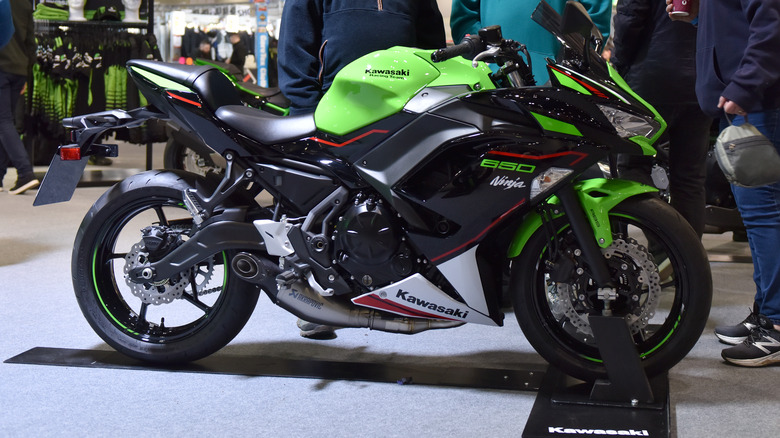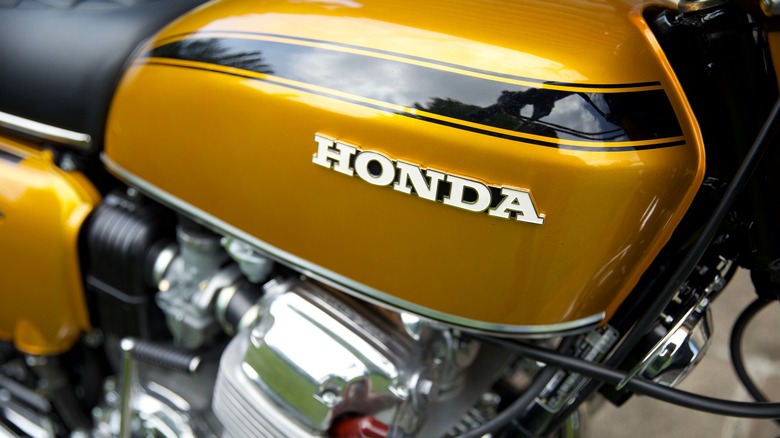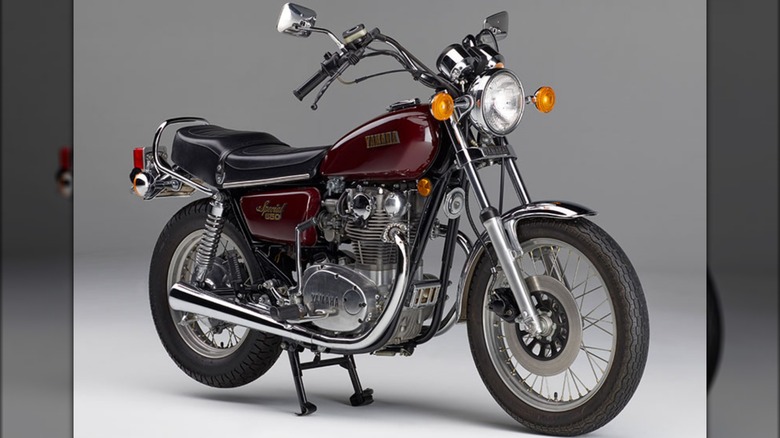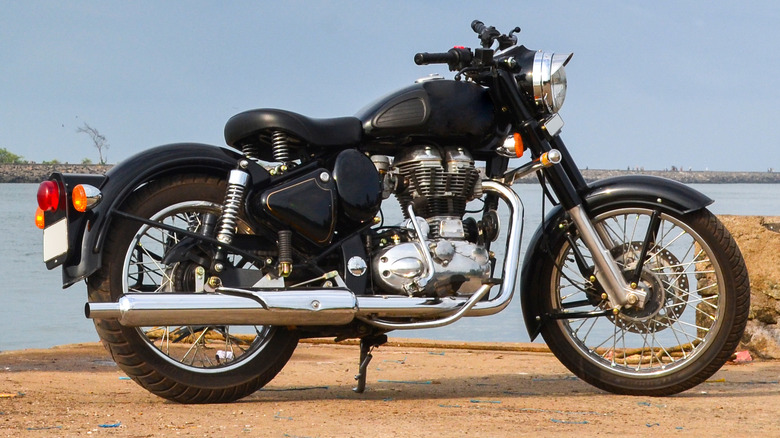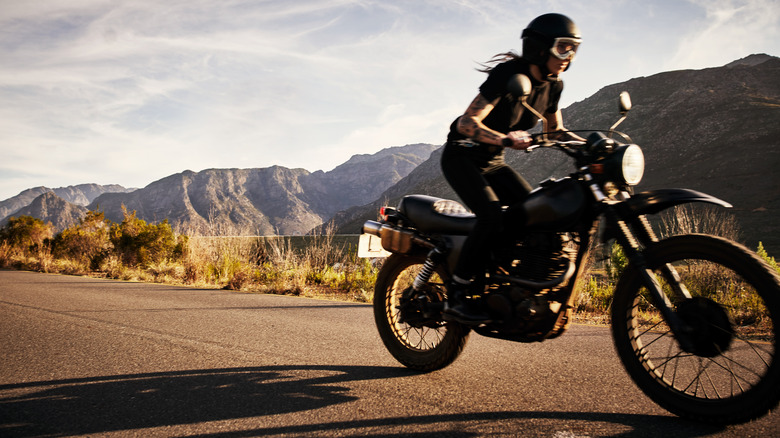10 Of The Most Reliable Motorcycles Ever Built
In the world of motorcycling, the need for speed often takes center stage, but for many riders, the true hero of the road is reliability. After all, what's the use of a lightning-fast bike if it's prone to breakdowns or demands constant tinkering to perform? The real treasures in the motorcycle world are those dependable companions that stand the test of time, delivering miles, trust, and reliability.
There's a special place in every gearhead's heart for that one bike or engine that has gotten them safely through rough times. Reliability in a motorcycle is about more than just low maintenance. While that is an important quality, it's also about trust, history, and a great ride. Motorcycles should be a fun mode of transportation that not only promises to get you to your destination but also to make every journey memorable for all the right reasons.
Reliability can be subjective, especially when looking at older model bikes and individual experiences. In curating this list, we delved into specifics like the maintenance records of bikes, endurance testing, historical data, and brand reputation, as well as a host of other considerations. Here are what we consider to be some of the most reliable motorcycles ever built. This list covers several decades of automotive history with motorcycles that have proven time and time again that they will get you where you need to go, and will do so in style.
Honda Super Cub
The Honda Super Cub tops our list as a global street favorite. Chances are good that you've seen at least one riding around in your lifetime because the Super Cub is one of the world's best-selling motor vehicles of all time. With over 100 million units sold, Honda's sales figures highlight people's trust and love for this durable motorcycle. It is definitely worth taking a closer look at why consumers have placed their trust in this plucky motorbike.
Introduced in 1958, the Super Cub has consistently appealed to riders with its simple design, reliable engine, and excellent fuel efficiency. Holding the title as the best-selling motor vehicle in history, it's clear it has a wide appeal and is known for its reliability. It's also one of the coolest-looking Honda motorcycles ever made.
The production of the Super Cub started in 1958 and continues today. The latest models are priced just under $4,000 and look very similar to the original, with the perfect mix of charm and simplicity. The Super Cub comes equipped with a 125cc engine and is a clever hybrid of a motorcycle and a scooter.
The Super Cub is designed for simplicity, comfort, and ease. Its step-through frame makes getting on and off easy. The engine is strong enough for city driving and commuting, making it an ideal mix of practicality and usability. Its lasting presence on roads around the world proves its relevance and reliability.
BMW R1200 & 1300 GS
BMW is well-known for its excellent engineering, solid reliability, and yes, its luxury price tags. Among its lineup, the BMW R1250GS has become one of BMW's best-selling bikes, standing out for its excellent performance on long tours, a reputation that's been solidified through extensive testing.
Despite the higher prices often associated with BMW motorcycles, the R1250GS has proven itself to be a symbol of dependability as well as one of the best BMW motorcycles ever made. It's become the preferred adventure motorcycle for world travelers, praised for its durability and its ability to smoothly navigate through a variety of terrains.
If you're a fan of BMW bikes, you may have seen the TV miniseries "Long Way Around," in which celebrities Ewan McGregor and Charley Boorman traveled around the world on BMW 1150 GS bikes. The 1150 would ultimately become the 1250 GS model and improve upon the already legendary features of the 1150.
More recently, BMW released the 1300 GS and 1250 Adventure GS models in 2024 that have built upon the framework of previous generations. A bike having the distinction of being driven around the world is more than enough to warrant BMW's spot on this list.
Yamaha TW200
When talking about design and reliability, the maxim, "If it isn't broke, don't fix it" is a central concept, and the Yamaha TW200 takes that to heart. This mindset has made it a dependable choice for both off-road and casual riding. This dual-sport motorcycle is beloved for its off-road capability, user-friendliness, and legendary reliability. Its air-cooled engine and simple design make it easy to maintain, even for beginners.
Looking back to its debut in 1987 and comparing it to the 2024 model, you'll find the Yamaha TW200 has largely remained unchanged. The bike has seen only minor updates, such as the introduction of an electronic starter and new color options, but its core design has stayed the same.
Designed as a dual sport bike that can thrive on and off the road, the Yamaha TW200 has proven its reliability with its unchanging design. Just like sharks and crocodiles barely evolving over millennia, the Yamaha TW200 has only changed slightly (with modern electronics), with later models simply changing colors.
Today's TW200 keeps its 196cc engine, the recognizable square headlight, and large, knobby tires that define its look. It's still seen as a versatile bike, similar to a two-wheeled quad in terms of its all-terrain capability, vindicating the idea that some things are best left as they are.
Triumph Bonneville T120
Triumph motorcycles have a rich heritage; they have earned their place in automotive history. The Bonneville was originally designed from the T110 Tiger's frame and was a tribute to John Allen, who rode a modified Tiger to beat the speed record with a 214.4 mph run at the Bonneville Flats in Utah. Triumph redesigned the Tiger and named it the Bonneville for the record-breaking achievement. It grew in popularity for its reliability and ride, but there were a few hiccups during its production run.
The Bonneville T120 was first released in 1959 and quickly became a favorite among American riders. With the name and record-breaking speed run behind it, riders knew what the bike was capable of and wanted to take it for a spin. It proved to be a fantastic all-around bike, offering great speed with low maintenance. Stock models were set to receive maintenance every 10,000 miles, making it a breeze to ride with few worries about upkeep.
As the motorcycle market evolved and Japanese bikes became more popular, the Bonneville's spotlight faded. However, the reliability and reputation of the Bonneville persisted. Even after Triumph Engineering faced challenges, the Triumph brand and the Bonneville name were revived as Triumph Motorcycles.
Today, riders can purchase upgraded versions of the T120 Bonneville with modern electronics like ABS systems, cruise control, an advanced 1200cc engine, and state-of-the-art safety features, making it a fantastic bike for beginners and those looking for a reliable ride with a classic look.
Honda Gold Wing
If you're planning a long-haul trip, you'll find plenty of bikes to choose from, but the Honda Gold Wing often tops many of those recommendation lists. Honda bikes are known worldwide for their reliability, and for those in the market for a touring bike, the Gold Wing has been a favorite for many years.
The Honda Gold Wing was first released in 1975, but its story starts in Honda's R&D department in 1972. It started as a prototype concept called the M1 that was specifically made to improve rideability without sacrificing performance. It was nicknamed the "King of Motorcycles" and later the "King of Kings." While that might sound a bit over the top, the Gold Wing has consistently lived up to its grand titles. Fast forward to 2024, and the latest model has a sleek, futuristic look that has continued to advance over the decades.
The Gold Wing is defined by its touring capabilities. It's a massive bike that feels like you're driving a couch. The engine was made famous for its power and reliability in the 1970s, and today is a horizontally opposed six-cylinder 1833cc. The latest versions add a suite of electronic safety features and comforts, including luggage options and advanced navigation.
While not known for being particularly nimble, Gold Wings are built to last and can provide years of trouble-free riding for long-distance bikers. For its comfort, history, and reputation as one of the best touring bikes in the world, the Honda Gold Wing easily earns its place on our list.
Suzuki DR650
Suzuki first rolled out the DR650 in 1990, presenting it as the next step up from the DR600, with a beefier 644cc engine. It quickly became a hit for its rugged endurance, earning a spot as a fan favorite.
The reliability of a motorcycle often hinges on its brand reputation and how well it's received by riders. After all, a popular motorcycle will be easier to find parts for, contributing to its perceived ease of maintenance. Decades after its initial release, the DR650 is still incredibly popular around the world, and consistently tops the sales charts in countries like New Zealand. Its enduring popularity, even after years on the market, speaks volumes about its reliability and the trust riders place in it.
Of course, the Suzuki DR650's reputation is also impressive when you look at it from a rider's perspective. Whether it's off-roading, cross-country expeditions, or daily commutes, its 644cc single four-stroke engine provides enough power to adequately handle any task with ease.
The DR650 isn't just for the daily grind; it's also built for adventure. One owner's journey across North and South America, followed by a tour of European rallies, demonstrated its exceptional resilience. Despite facing only minor damage throughout these extensive travels, the DR650 proved its mettle, as the rider could easily source and replace parts all along the way.
Kawasaki Ninja 650
Kawasaki's Ninja series is iconic, with its sporty look and reputation for speed and dependability. The Ninja 650R, in particular, has won over a lot of fans, being called one of the best Kawasaki motorcycles ever made.
The Ninja series first appeared in 1984 and just celebrated its 40th year in production. The Ninja 650 is one of Kawasaki's larger models with a 649cc, 4-stroke, parallel twin engine. The original Kawasaki 650R variant was designed to have the best of both worlds: A hybrid between the fun of a sport bike and the practicality of a commuter. It had the power to keep up with some of the flashier and specialized bikes of its class, but had the comfort and rideability to make it practical to use as an everyday work ride.
Kawasaki has a history of reliability, as well as pushing the envelope with superbikes, contributing to the creation of the category with models like the Ninja ZX-1. The company is known for crafting engines capable of incredible speeds. The only real reason the production models are as slow as they are is because of a "gentleman's agreement" between manufacturers to limit the speed of bikes without aftermarket tuning. The Ninja 650 has the same engineering Kawasaki puts into its speed demon bikes, but is tempered with practical features that ensure its reliability for everyday use.
Honda CB750
The Honda CB750 is not only one of the most reliable motorcycles ever, but it also helped define an entire generation of motorcycles, leading to the creation of the Universal Japanese Motorcycle (UJM) category.
Introduced in the late 1960s, the CB750 is often hailed as one of the most reliable motorcycles ever. It was one of the first motorcycles to be called a "superbike," and its inline-four engine was both powerful and dependable. During the late 1960s, the Western market was dominated by British and American motorcycles. It was during this period that riders began to sit up and take notice of the offerings coming out of Japan, and one of the first to set the bar was the CB750.
The defining feature of the CB750 was its four-cylinder engine. Other bikes at the time typically were single or twin-cylinder engines. Honda's design was later adopted by its competitors like Yamaha, Suzuki, and Kawasaki. As the Japanese manufacturers watched and learned from each other, bikes imported from Japan began to have a similar pseudo-standardized style which was dubbed the UJM.
The CB750 was an innovator that had power, reliability, and a decent price tag for its time. It's the precursor to the superbikes of today, and it helped Honda secure its place in the Western market and the world.
Yamaha XS650
The Yamaha XS650 went through a trial by fire to prove its reliability against well-established British and American bikes when it first appeared in Western markets late in 1969. Initially overlooked as just another foreign brand, it didn't take long for riders to notice how the XS650 stood out, particularly when it came to service and maintenance needs.
The reputation of the XS650 was built in part due to its unique engineering and its odd history. Originally, the XS650's engine was a smaller 500cc engine designed by German manufacturer, Horex, that built engines and parts after World War II. After a few changes in ownership, the engine design was acquired by the Japanese company Showa, which Yamaha then took over in 1960. This blend of German engineering and Japanese refinement over the years gave the XS650 its reputation for being both reliable and powerful.
One of the unique innovations of the engine was its crankcase. Engines at the time all used a vertically split crankcase, which tended to cause inevitable oil leakage and required maintenance to ensure proper use. The XS650 had a horizontally split crankcase, which meant less leakage and easier maintenance.
Side by side with its contemporaries, the Yamaha XS650 would be the last bike still running when the others needed a break for maintenance or an oil change. It's this enduring quality that has given the XS650 a special place in the hearts of motorcycle enthusiasts.
Royal Enfield Bullet 350
Finally, we come to the Royal Enfield Bullet 350, a motorcycle that became commercially available for the first time in 1932. The design was a holdover from its use during World War I, and over the years its reputation for reliability has only grown.
For proof of the Royal Enfield 350's reliability, you only need to look at the production numbers and its history. The 350 model has the distinction of being one of the longest continuously produced bikes in the world. Royal Enfield originally produced bikes for the Allied forces, and after the war, their UK manufacturing moved to India. Since then, Royal Enfield has made its mark on the automotive industry with its bikes. It was the first company to introduce a swinging rear suspension to its bikes, and since then, these have essentially become the industry standard.
The latest version of the Royal Enfield Classic 350 is a modernized take on the original design that adds comfort and safety features to the classic bike. It still retains its iconic shape and look, but it's now filled with ABS and electronic systems.
With innovations that have withstood the test of time and the continuing popularity and production of the Royal Enfield 350 series, the bike's reputation for reliability is well justified.
How we reached our conclusion
When we set out to uncover the most reliable motorcycles, we knew we couldn't just rely on our gut feelings or be swayed by the loudest fans. Not everyone has the luxury of a massive garage like Jay Leno or access to state-of-the-art testing facilities to personally vet each bike's reliability.
In our exploration of the most reliable motorcycles, we leaned heavily into the insights provided by Consumer Reports. Their exhaustive research, grounded in feedback from over 11,000 subscribers, offers a window into the reliability landscape of the motorcycle industry. This significant survey highlighted a clear portrayal of brand reliability, particularly spotlighting Yamaha, Suzuki, Honda, and Kawasaki as leaders in this arena.
In this year's survey, thanks to an even larger pool of participants — 12,300 motorcycles were included — Consumer Reports was able to enhance their analysis. This expansion allowed for a broader spectrum of brands to be examined and a more nuanced understanding of reliability across the industry. By adjusting for variables (such as mileage driven over a 12-month period) and estimating repair rates for four-year-old models without a service contract, Consumer Reports has provided a dataset that is the basis for our article.
It informed our selection criteria, ensuring that our recommendations are backed by current and real-world user experiences. This blend of Consumer Reports' authoritative data with our own research and insights aims to offer readers a clear and well-researched guide to the most reliable motorcycles on the market today.
